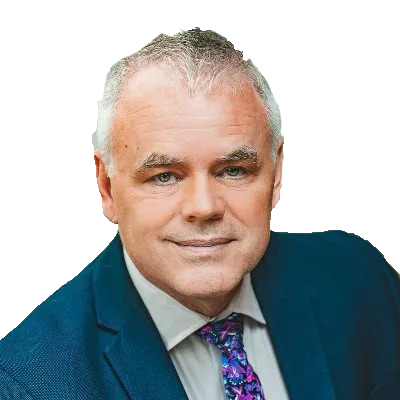Millionaire Tim Gurner’s refreshing honesty reveals the soul of business

Source: Twitter/ AFR
Every now and then a window opens into the soul of the business community, and we catch a glimpse of the values and goals that shape the actions of the captains of industry.
A striking example occurred this week at a business outlook conference sponsored by the Australian Financial Review.
In a panel discussion, Tim Gurner – founder and CEO of property developer Gurner Group, and personally worth almost $1 billion – discussed the state of the labour market.
In his view, historically low unemployment in recent years has undermined the work ethic and discipline of the people who construct the buildings that made him rich.
“Tradies … have been paid a lot to do not too much in the last few years, and we need to see that change. We need to see unemployment rise. Unemployment has to jump 40 to 50 per cent in my view. We need to see pain in the economy,” Gurner said.
‘Hurting the economy’
“There has been a systematic change where employees feel the employer is extremely lucky to have them, as opposed to the other way around … We’ve got to kill that attitude, and that has to come through hurting the economy … Governments around the world are trying to increase unemployment … We’re starting to see less arrogance in the employment market, and that has to continue.”
Property developer and CEO Tim Gurner: “We need to see unemployment rise. Unemployment has to jump 40, 50 percent in my view. We need to see pain in the economy. We need to remind people that they work for the employer, not the other way around.” pic.twitter.com/la3ibCDCsp
— Ken Klippenstein (@kenklippenstein) September 12, 2023
Gurner didn’t mention ‘inflation’ in his statement. We are regularly told by central bankers that lifting unemployment is necessary to control inflation.
But in Gurner’s telling, the goal is to control workers, not (at least directly) prices: To re-instil a suitable fear of joblessness and dislocation, so workers work harder and demand less.
Gurner’s remarks were eerily reminiscent of a prediction made by the great Polish economist, Michal Kalecki.
Kalecki was a contemporary of John Maynard Keynes. He simultaneously developed theories of aggregate demand management that could prevent depressions and achieve full employment.
A desirable cushion of jobless
In a famous 1943 article, Kalecki explained that even though full employment could now be readily achieved through active fiscal and monetary policy, powerful business interests would reject that goal.
They prefer to maintain a desirable cushion of unemployment, to keep workers in line and private corporations humming along:
“Lasting full employment is not at all to [business leaders’] liking. The workers would get ‘out of hand’ and the ‘captains of industry’ would be anxious to ‘teach them a lesson’ … A powerful bloc is likely to be formed between big business and the rentier interests, and they would probably find more than one economist to declare that the situation was manifestly unsound. The pressure of all of these forces, and in particular of big business, would most probably induce the government to return to the orthodox policy.”
Kalecki predicted the historic shift in economic policy that would occur decades later, led by thinkers like Milton Friedman and Edmund Phelps.
They postulated the idea of a ‘natural rate’ of unemployment. In their view, unemployment is essentially voluntary: Some people choose not to work at the market-clearing wage, supported unwittingly by minimum wages and social welfare policies that subsidise unemployment and discourage job searches.
Friedman and Phelps urged government to focus on controlling inflation, rather than fruitlessly trying to reduce unemployment below this ‘natural’ rate.
In modern guise, the theory has a less pejorative moniker: The Non-Accelerating Inflation Rate of Unemployment (NAIRU). But it postulates the same idea, namely that unemployment must be kept high enough to discipline labour and restrain labour costs.
Central bankers rarely explicitly discuss the NAIRU anymore. This is partly to avoid offending the public with the idea that they are actively working to raise unemployment.
It’s also because NAIRU models have been notoriously unable to pin down any precise number for this mythical benchmark, making it useless for policy purposes. In most industrial countries after the 1990s, unemployment crashed through estimated NAIRU benchmarks with no impact on inflation – casting great doubt on the very concept, let alone specific numerical estimates of it.
Nevertheless, it is clear that NAIRU thinking still underpins the current obsession of central banks with alleged overheated labour markets as the purported source of post-COVID inflation. It also informs their single-minded focus on suppressing aggregate demand (and thus employment) to reduce that inflation.
Even bankers say quiet bits out loud
Occasionally, even central bankers say the quiet bits out loud.
The Reserve Bank of Australia’s new governor Michele Bullock recently stated the unemployment rate had to rise to 4.5 per cent (from 3.5 per cent when she said it) to allow inflation to return to the bank’s 2.5 per cent target.
If inflation is still above 2.5 per cent when the unemployment rate gets that high, this will be interpreted as evidence that the true NAIRU must be higher than thought.
Let’s hope they don’t resuscitate previous estimates of the NAIRU, which formerly suggested unemployment had to be 7 per cent or even higher to keep workers suitably disciplined.
We should be grateful to Gurner for his refreshing honesty, which helps illuminate the choices being made in current monetary policy.
Workers who expect too much are a barrier to his efforts to accumulate more wealth. He wants adequate discipline restored, and engineering higher unemployment is exactly the way to do that. And apparently, central bankers agree.
Dr Jim Stanford is economist and director of the Centre for Future Work








